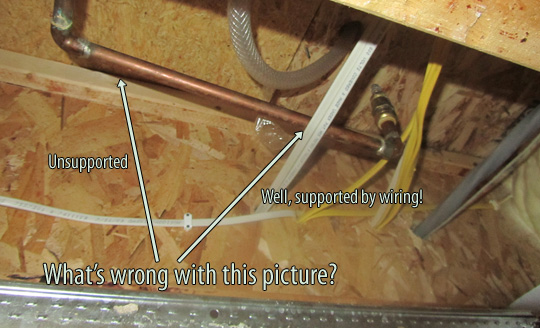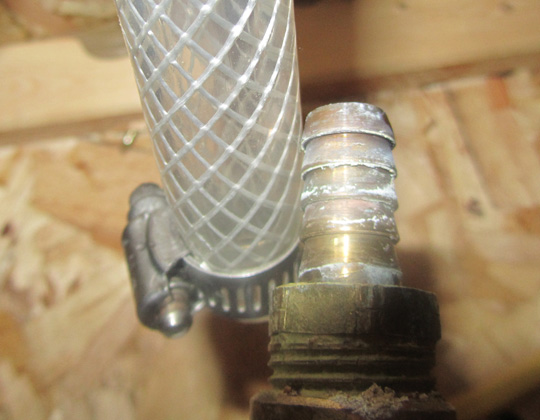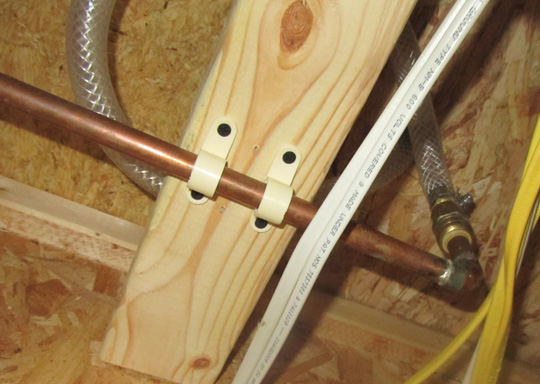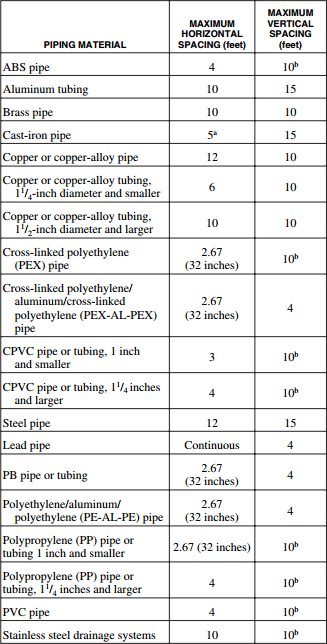It’s family movie night – that rare occasion where your spouse and kids are all available to relax on the couch for a couple hours. About minutes into the movie, after you’ve barehanded 5 or 10 massive amounts of popcorn into your face, you hear a familiar sound. It’s the sound of someone filling up the bathtub as water runs through your home plumbing at full capacity.
Except, everyone’s on the couch. Who could be running water? You start wandering around the house, checking all the faucets. You start to head down to your basement, where the sound changes from water flowing through pipes to water coming out of a fire hose. You have a pipe leak. A big one!
Okay, so that’s not exactly how it happened to me, but I like the drama. I was working quietly in my basement at the time (about a week ago). Because I was so close to the source of the leak, I identified the problem within about 30 seconds. But, what if I wasn’t in the basement, or wasn’t even home!
Why water supply pipes leak
I’m sure there are a number of reasons that pipes leak, but I’m only going to talk about one today, the unsupported pipe (the reason my pex tubing popped off of my barbed fitting).
Gravity imposes stress on any joint. Imagine holding your arms out to your sides for more than 5 minutes. If you don’t get bored first, your shoulder joint will start to ache.
This applies equally to any plumbing joint, especially one that is close to a water source that is stopped and started frequently.
An unsupported pipe joint sags, even if just a little bit. That sagging effect can weaken the joint over time, depending how much the pipe moves when water starts or stops flowing through it.

In my example above you’ll notice that I hastily installed my dishwasher supply line, leaving it completely unsupported. In fact, I left it to rest on my wiring! Granted it was about midnight when I was working on this, so I likely had enough after it was functional. But I should have returned to it.
Here’s the result of my laziness, 3 years later:

Yep, after a few years of water stopping and starting, the unsupported connection grew weaker and weaker until it finally gave up.
How to support plumbing pipes
There is no easier DIY task than supporting plumbing pipes. Myriad products exist to support water supply and drain lines. The most common arguably are the pipe hanger and the pipe strap.
Pipe hangers are handy for drain pipes as they’re larger and often don’t suit themselves to being strapped to a floor joist, where a hanger would allow them to be suspended from the side of a joist.
I recently stumbled on my favored solution to date, the EZGlide Tube Clamp. They were about $1.50 for a bag of 5 at Home Depot. Easily worth the additional 20 cents over the tube straps.
The tube clamps “clip” onto the pipe to make it easier to attach them to a surface. Once you clip them onto a pipe, they’ll slide along the pipe, but won’t fall off.

In my case, I ran a 2×4 between within the floor joist bay, as it was the only way to properly support the pipe.
It really couldn’t be easier. So, I urge you to spend 5 minutes in your basement or crawl space to see if you can identify any poorly supported pipes. Look at the connections themselves and make sure the pipe is supported somewhat close the the connection.
I spent 3 hours cleaning up my basement today, due to the water leak. Something that could have been prevented with 5 extra minutes spent supporting my pipe.
Where to support the pipes
Each town / state may have it’s own building codes related to how pipes should be supported.
This table was pulled from Virginia’s plumbing code, but I have to assume other codes are similar.



I loved how you mentioned that pipe hangers can help with larger pipes. My husband is trying to fix the piping in our house since it’s been having a couple of issues for the past couple of weeks, and he said that there are some really heavy ones that are hard to work with. I’ll make sure to pass this information along to him so he can look into getting some pipe hangers.